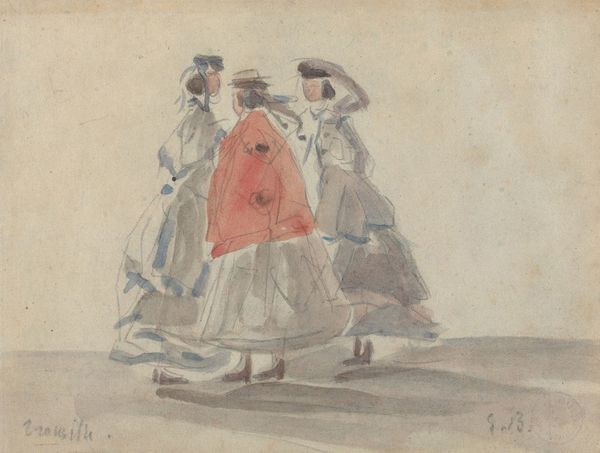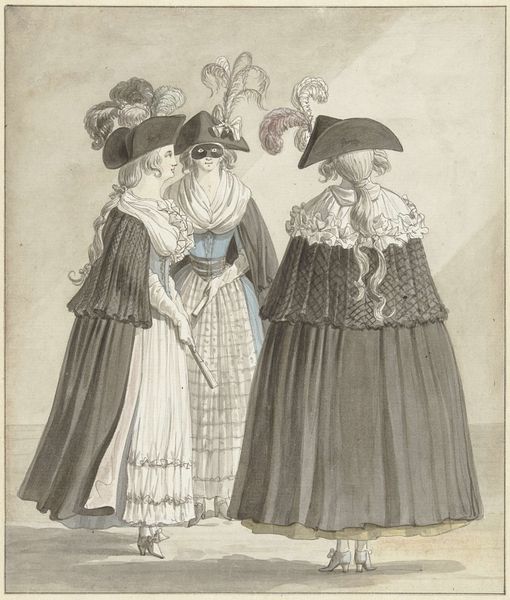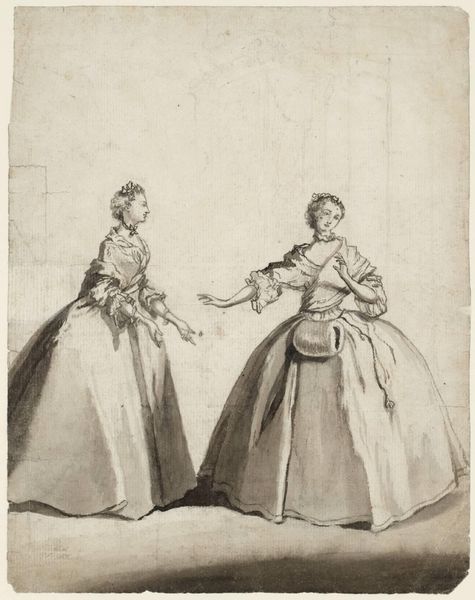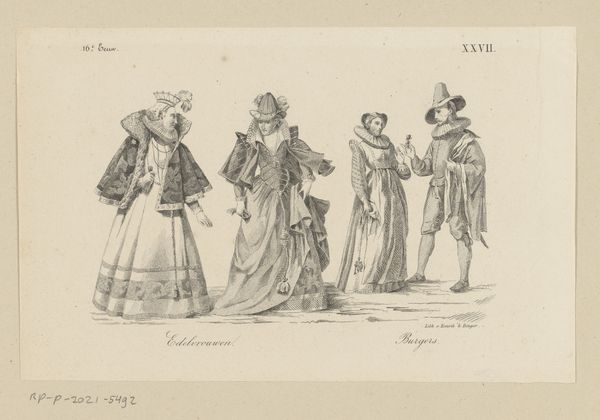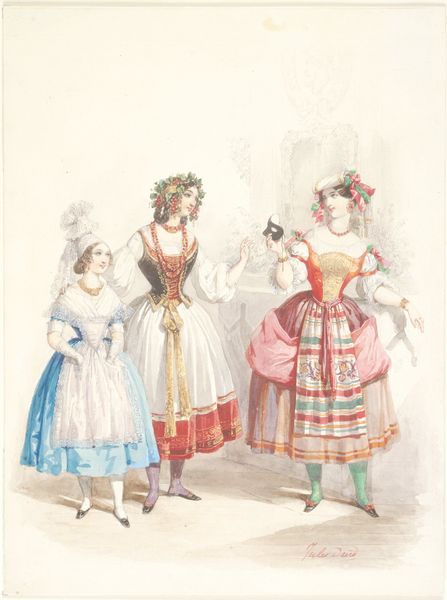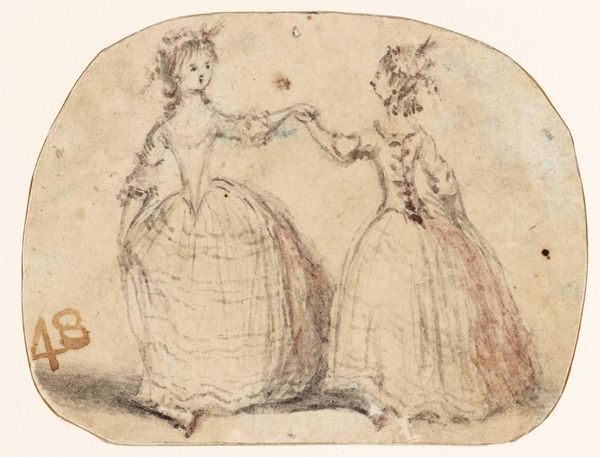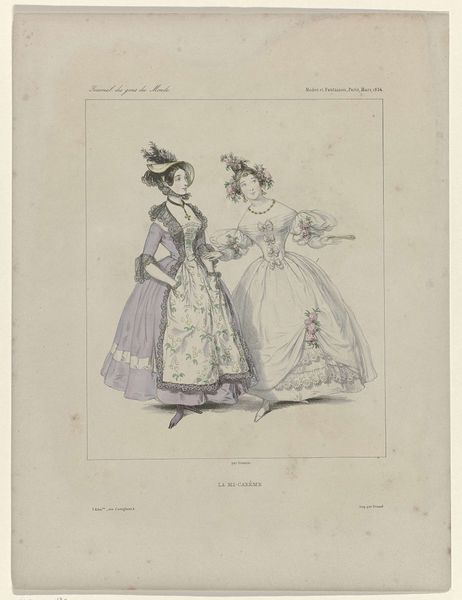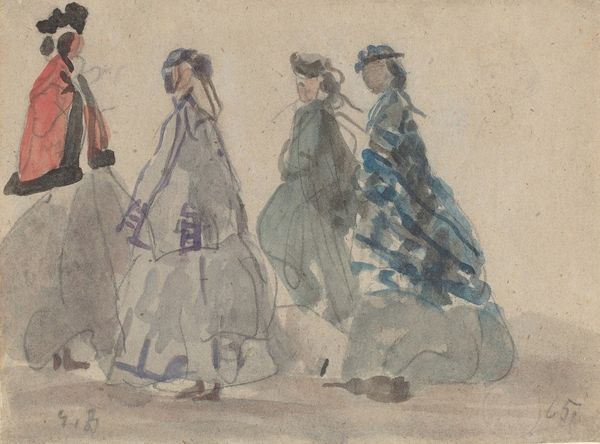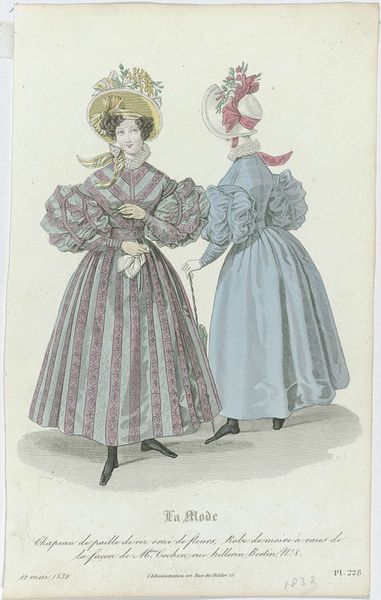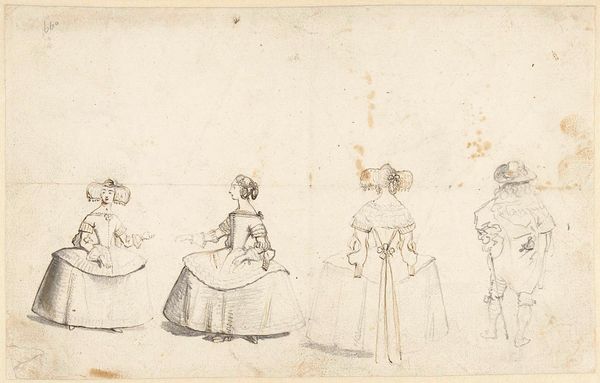
Copyright: Public Domain: Artvee
Curator: Let's consider this watercolor and pencil drawing, titled "Etude de costumes," by Eugène Boudin. It's estimated to have been created around the 19th century. Editor: My first thought is that it evokes a breezy day, a fleeting impression. The colours, especially the reds, are vivid, yet the sketch itself feels quite spontaneous and free. There is also something theatrical here. Curator: I think that theatrical sensibility is crucial. The work presents an interesting study of class and performance, looking at women as performative subjects who wore costumes in the most ordinary, supposedly unguarded situation. Note how the dress becomes not just attire, but armor in a patriarchal society. Editor: Yes, and that visual symbolism comes through in the choice of line and the weight the artist gives each element. The sharp black lines define the silhouette of the red dresses in the foreground. This emphasizes the status and activity of the people occupying that social stratum. The looser drawing in the background and paler colors may indicate lower social standing or inactivity. The red against neutral background evokes, to me, courage and prominence. Curator: Absolutely. I’d push it further and suggest it speaks to the very deliberate act of self-presentation that was expected, or even demanded, of women in 19th-century society, where clothing signalled one's position. It forces a commentary on the limited choices afforded to women. Editor: You’re right. It’s about prescribed identity as much as individual choice. And that tension is beautifully captured through the combination of precise drawing and fluid washes of watercolor. What remains, if we peel back the layers of artifice? What is real, underneath? That's what interests me the most in Eugène Boudin's drawing. Curator: And I would agree. Ultimately, Boudin provides a space to analyse and critique the forces shaping these identities. This piece enables discussion of not just art history, but social and political theory through an intersectional lens. Editor: It reminds me of the enduring power of art to freeze a moment, and offer it for reconsideration. Curator: And encourage future ones!
Comments
No comments
Be the first to comment and join the conversation on the ultimate creative platform.
